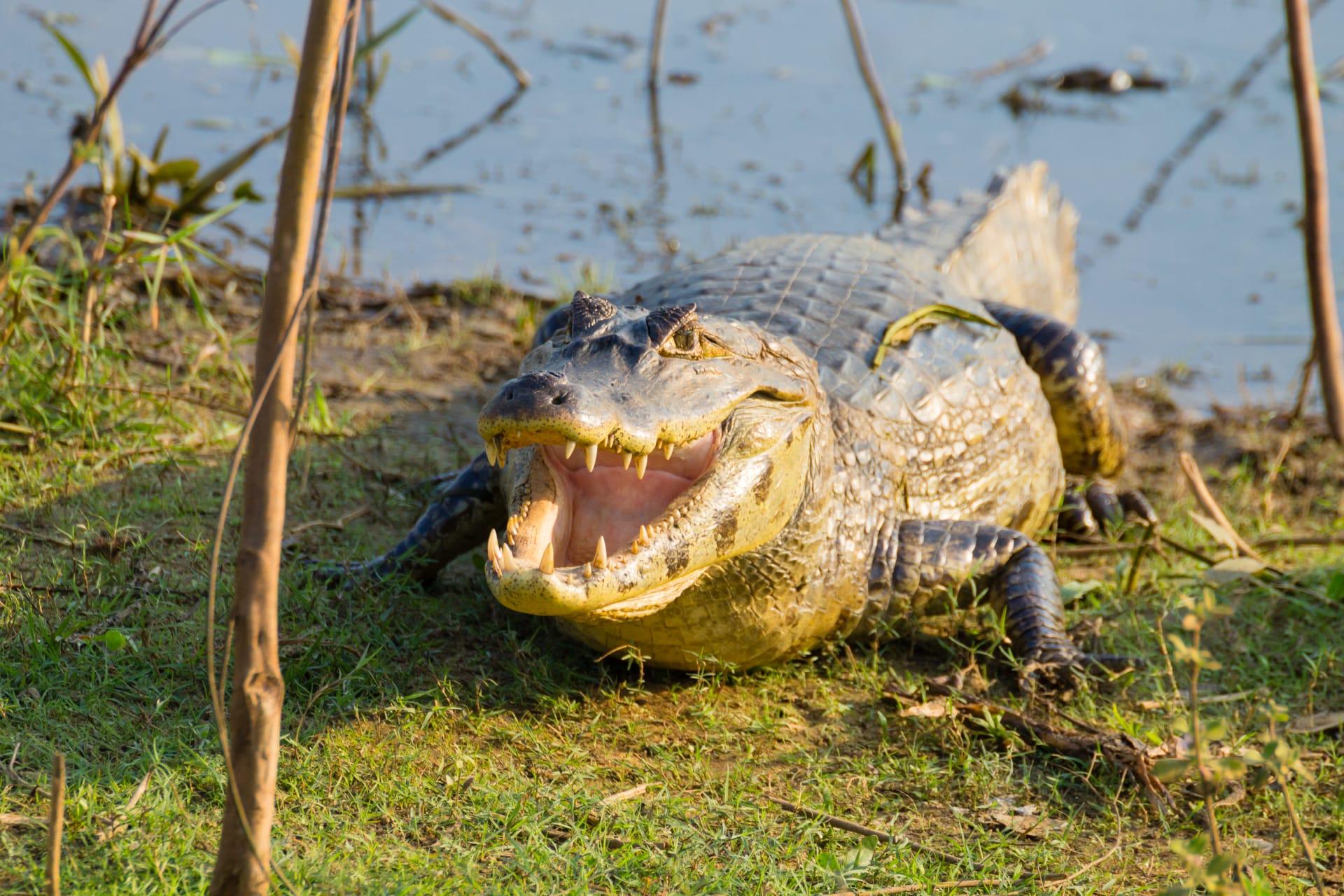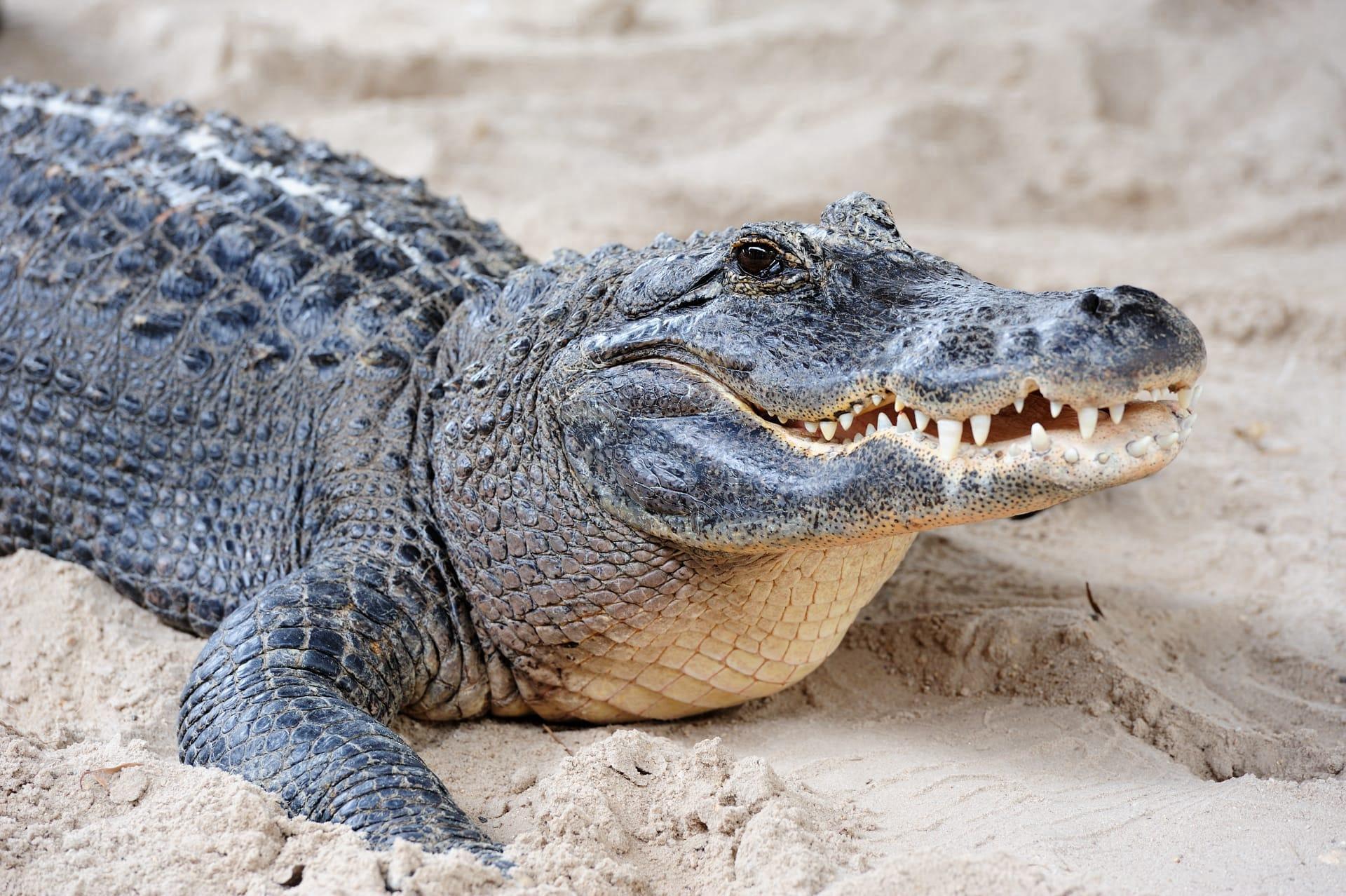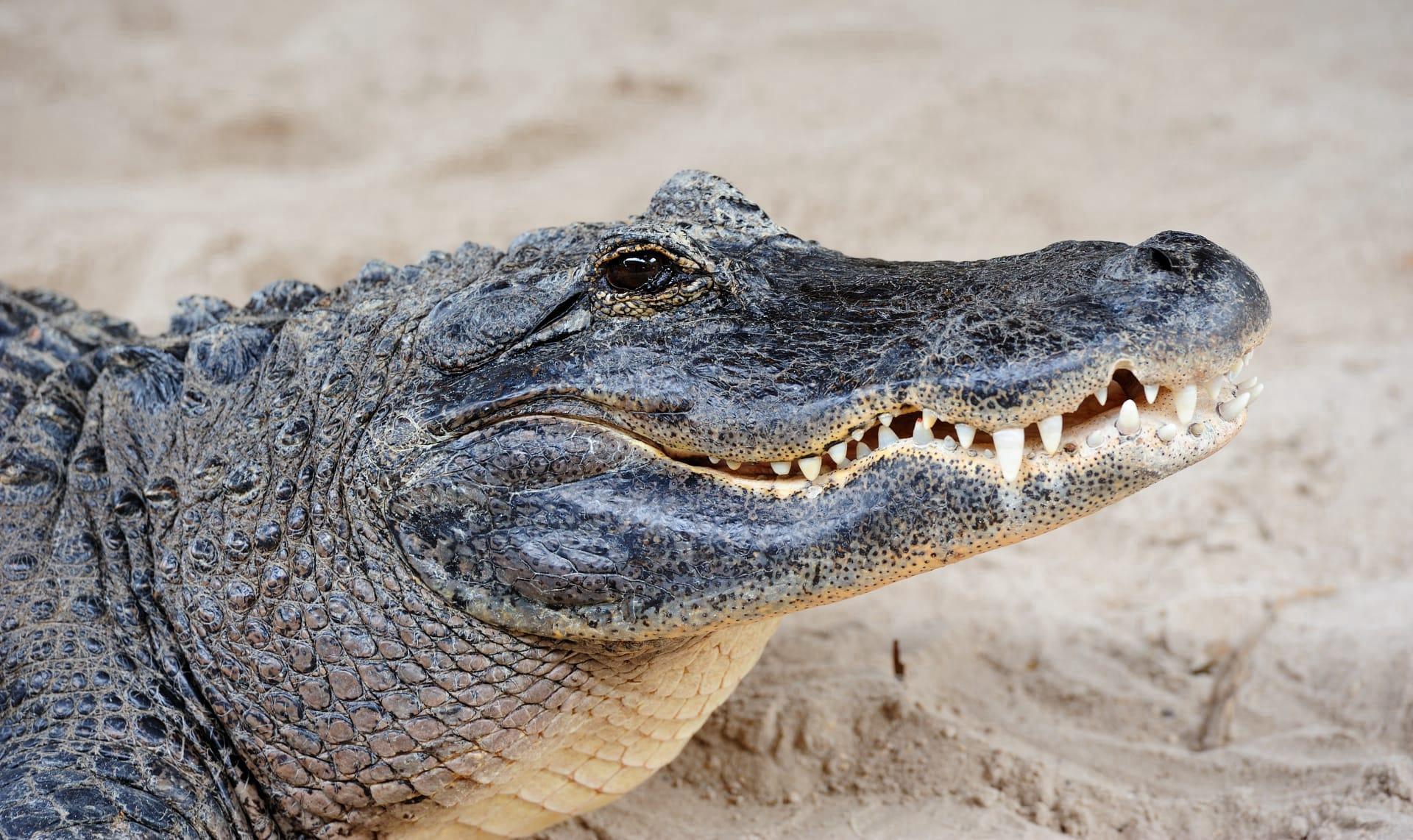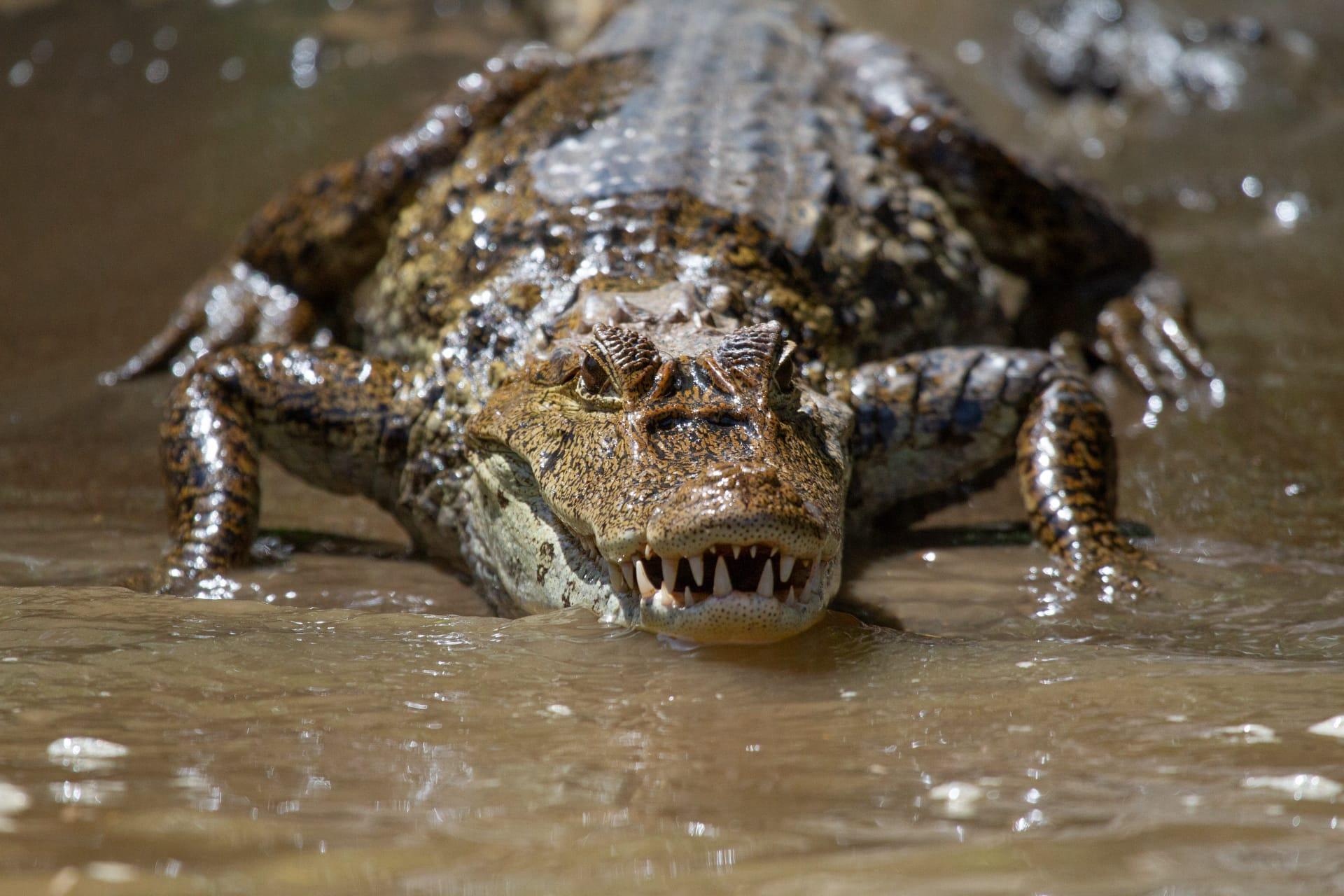Dwarf Crocodile
- Home /
- Mini Encyclopedia /
- Animal /
- Dwarf Crocodile
1
The Dwarf Crocodile, scientifically known as Osteolaemus tetraspis, belongs to the family Crocodylidae. This species is further divided into two subspecies: Osteolaemus tetraspis tetraspis and Osteolaemus tetraspis osborni. These small-sized crocodiles are distinct for their short snouts and rugged, armored skin, which features osteoderms, or bony deposits forming scales, plates, or other structures in the dermal layers of the skin. They usually grow to a length of about 1.5 meters (5 feet), making them one of the smallest crocodile species.
Dwarf Crocodiles are primarily found in the tropical forests of Sub-Saharan Africa. They inhabit regions stretching from West Africa to Central Africa, with their range extending from Sierra Leone and Liberia, through countries like Ghana, Gabon, and Cameroon, to the Congo Basin. These crocodiles favor slow-moving rivers, swamps, and marshes where they can easily blend into their murky surroundings. Their presence in these ecosystems is often indicated by their distinctive eye shine when light is shone on the water at night.

2
Question: Is it true that Dwarf Crocodiles are less aggressive than larger crocodile species?
Answer: While Dwarf Crocodiles are indeed smaller and less intimidating than their larger relatives, it's a misconception to think of them as less aggressive. In reality, like all wild animals, their behavior can be unpredictable. They are solitary and territorial creatures, especially during the breeding season. They have powerful jaws and sharp teeth, capable of delivering a strong bite. However, they are generally shy around humans and tend to avoid contact unless provoked or disturbed.

3
Dwarf Crocodiles have adapted several survival strategies to thrive in their environment. They are nocturnal hunters, primarily feeding at night. Their diet mainly consists of fish, crustaceans, and small mammals, which they catch with their sharp teeth and strong jaws. During the day, they often remain hidden under water or in dense vegetation, emerging mostly to bask in the sun on riverbanks, which helps regulate their body temperature.
Reproduction is another key survival strategy. Female Dwarf Crocodiles build mound nests out of vegetation, where they lay around 10 eggs. They exhibit maternal care, guarding the nest from predators. The temperature of the nest determines the sex of the hatchlings, a phenomenon known as temperature-dependent sex determination. The young are born with natural instincts for survival, including swimming and hunting skills, and receive some initial protection from their mother.

4
In their ecosystems, Dwarf Crocodiles play a vital role as both predator and prey. As predators, they help regulate populations of fish and small mammals, maintaining a balanced ecosystem. Their hunting activities also contribute to the health of aquatic habitats by controlling species that could otherwise dominate the environment.
As a species, they are integral to the biodiversity of their habitats. Their presence indicates a healthy, functioning ecosystem. Additionally, their nests contribute to the nutrient cycle, as the decaying vegetation adds to the soil fertility. However, Dwarf Crocodiles face threats from habitat loss and hunting. Their role in the ecosystem highlights the importance of conservation efforts to protect these unique creatures and their habitats.

5
Film: "The Secret Life of Crocodiles" is a notable documentary produced in the United Kingdom in 1999. It explores the hidden world of crocodiles, including species like the Dwarf Crocodile. The film provides insights into their behavior, hunting strategies, and the challenges they face in their natural habitat.
Book: "Crocodiles: Their Natural History, Folklore, and Conservation" by Charles A. Ross, published in the United States in 1972, offers an extensive overview of various crocodile species, including the Dwarf Crocodile. Ross delves into their ecology, behavior, and the cultural significance of these reptiles across different societies.
Book: Another significant work is "Biology of the Reptilia, Volume 14: Biology of Crocodylia" edited by Grahame J.W. Webb, Charlie Manolis, and Peter J. Whitehead, published in the United Kingdom in 1987. This comprehensive volume covers the biology, physiology, and conservation status of crocodilians, providing detailed information on the Dwarf Crocodile among other species.